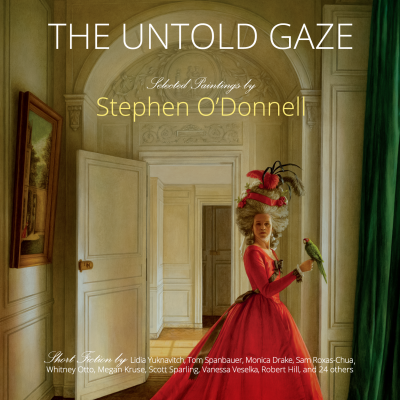 |
| In This Our Life, with Olivia de Havilland, 1942. |
Ernest Anderson was a remarkable actor, and it's unlikely you've ever heard of him.
It's no secret that Gigi and I love classic Hollywood film. And whenever we watch John Huston's In This Our Life from 1942, Anderson is one of the main reasons; his performance is
incandescent. The film stars Bette Davis and Olivia de Havilland as two contemporary Southern sisters - one good, the other very bad; you can probably guess who was which - and Anderson plays Parry
Clay, the son of their family maid (Hattie McDaniel). Some way into the film, we find out his character is studying to become a lawyer, and his scene with de Havilland, as he explains his ambitions to her, is like nothing else I've seen. He presents the plain truth of what it takes for a black man in the South to get ahead in life, to carve out something for himself, but he delivers it with the most graceful, tender earnestness. There is something so compelling about the actor and the character; it's rare that a performer can make you
feel so much affection for them after only one scene, but that's what Anderson accomplishes; he makes you
love Parry. Which makes it all the more painful when, late in the film, he is falsely accused by the Davis character of committing a hit and run of which she is actually guilty. To see him behind bars, broken in spirit, is devastating. His performance of the scene is beautifully, achingly done. And it carries the weight of the awful truth it represents, the powerlessness of people of color at that time and in that place.
 |
| Publicity for In This Our Life, with George Brent and Bette Davis. |
And yet, though he continued to work in film, and later in television, he almost never again played another role of substance. Today, you can barely find an image of him on the internet. He has no Wikipedia entry, and what little information one can find on his life often disagrees, even where and when he was born and died. I don't know if he ever married, or had children. I can find nothing on his personal life at all. Below is what I
have been able to find, what I believe to be accurate:
 |
| In This Our Life, with Frank Craven. |
Ernest Anderson (25 August 1915, Richmond,
Virginia - 5 March 2011,
DeLand, Florida) was educated at Dunbar High School in Washington, D.C. and
Northwestern University’s School of Drama and Speech. After
obtaining his bachelor’s degree, Anderson moved to Hollywood where he
got non-acting work at Warner Brothers studio before receiving his
debut role in In This Our Life. The story goes that it was Bette Davis who suggested him for the part, that she noticed him when he waited on her in the Warner Brothers commissary. It's also said that the part of Parry Clay was originally written employing the "black dialect" most often forced on African-American actors at that time, but that Anderson
argued for the integrity of the character and director Huston agreed with him, giving Anderson the opportunity to show Parry's great intelligence and dignity and grace. When the film was released,
Daily Variety praised the actor as a "standout", while the South grumbled, many venues cutting his scenes from the film. But it was the African-American community that really noticed this hopeful shift in Hollywood's portrayal of a young black man, flooding Warner Brothers with letters of appreciation.
 |
| In uniform, at the Hollywood Canteen with Bette Davis and Eddie Cantor, 1942. |
It appears that he was inducted into the army the same year, and after his
honorable discharge he returned to Warner
Brothers in 1947 as a contract player. IMBD lists forty-one film and television acting credits over thirty-six years, twenty-eight films - the last in 1970 - and thirteen television appearances. Of those forty-one performances, twenty-two were
uncredited.
And a list of his character titles tells the rest of the story:
Valet;
Club Car Steward; Messenger; Train Porter; Elevator Operator; Dining
Car Waiter; Black Man; Houseboy; Second Elevator Operator; Redcap at
Airport; Footman; Black Man; Train Steward; Cabin Boy; Bellhop; Train
Porter; Porter on Twentieth Century Ltd.; Ice Cream Vendor; Room Service
Waiter; Butler; Hot dog man; Porter.
 |
| The Band Wagon, 1953. |
 |
| North by Northwest, 1959. |
 |
| North by Northwest. |
 |
| Publicity for Three for Bedroom C, with James Warren, Fred Clark, and Gloria Swanson, 1952. |
 |
| Publicity for Three for Bedroom C, with James Warren and Gloria Swanson. |
 |
| Publicity for Three for Bedroom C, with Janine Perreau, Gloria Swanson, and James Warren. |
We own copies of several of the other movies in which he has small roles: Yankee Doodle Dandy, The Palm Beach Story, The Band Wagon, North by Northwest, as well as What Ever Happened to Baby Jane?, when he once again worked with Bette Davis, playing Ernie, the beach ice cream vendor at the end of the movie. And no matter the brevity, the slightness of the part, he always attracts notice. At the beginning of The
Band Wagon he has a short, light conversation with Fred Astaire and, even there,
it's impossible not to notice that there's something very special about
him. His voice, his charm. Whenever we see him in anything, no matter how brief his role, we
always make note of it. "There's Ernest Anderson!" And always express our regret that he had so
little opportunity....
 |
| What Ever Happened to Baby Jane?, 1962. |












































